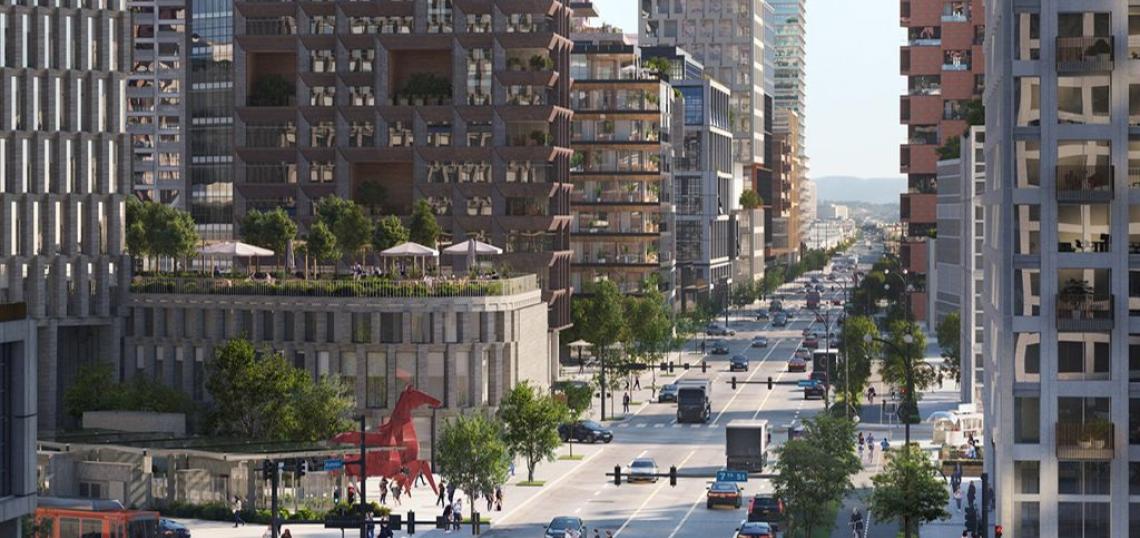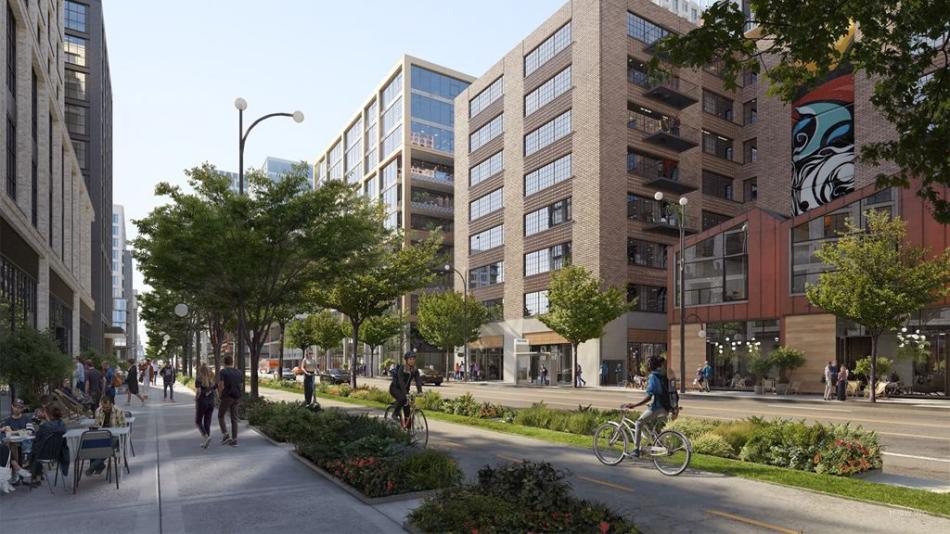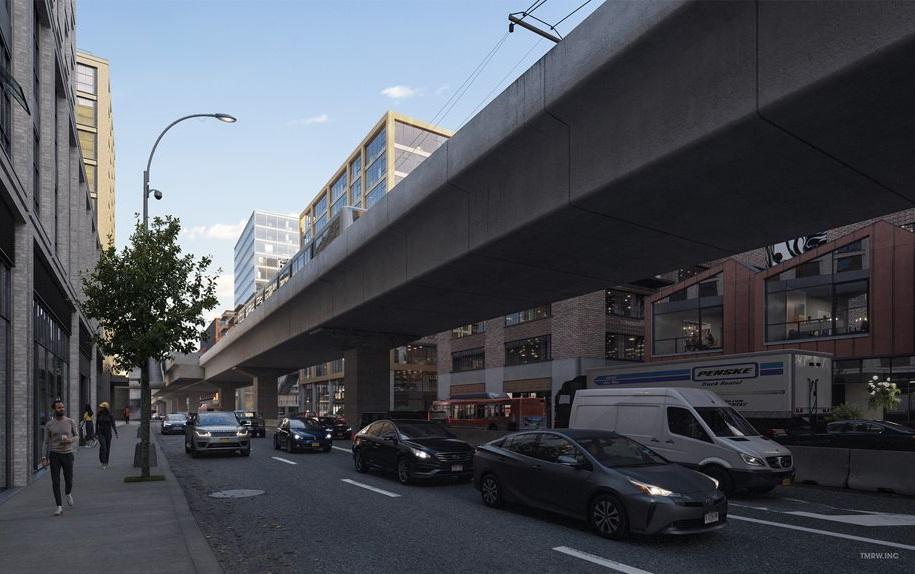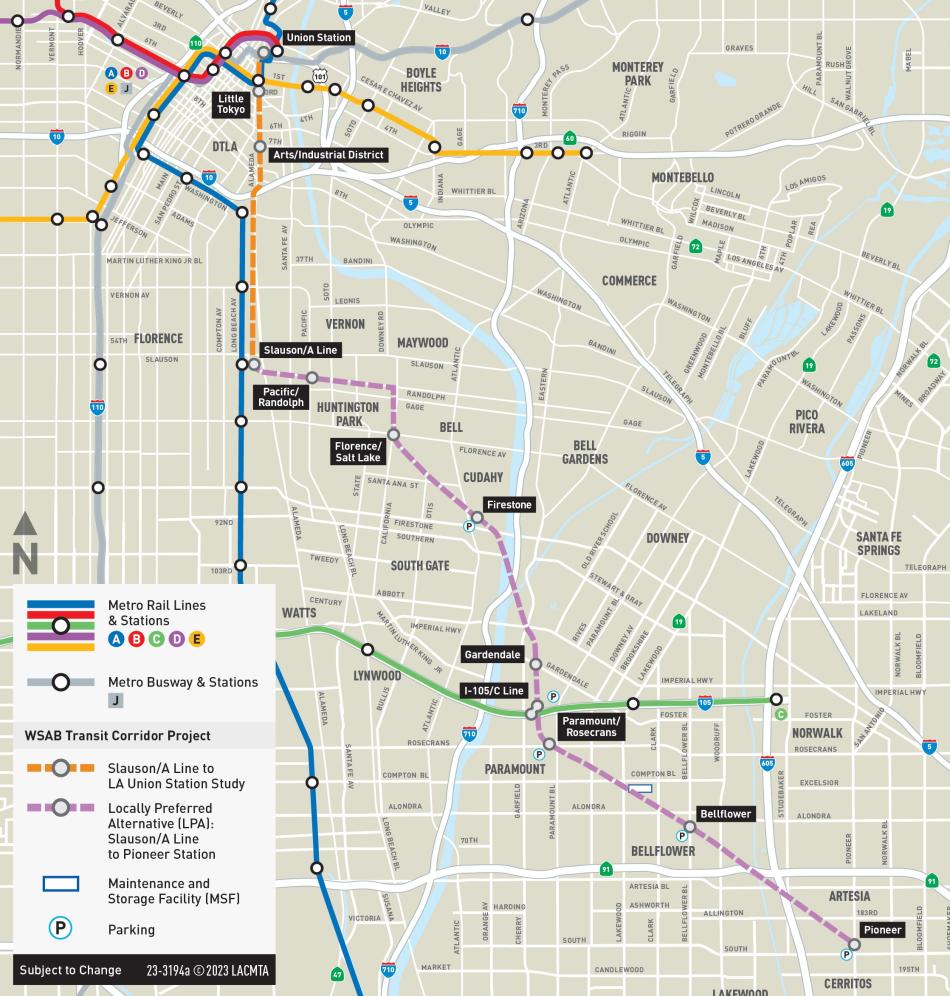The newly rebranded Southeast Gateway Line - formerly the West Santa Ana Branch - may not reach Downtown Los Angeles until the 2050s. But when it arrives, a group of neighborhood stakeholders want Metro to make sure that it does so as a subway.
The Solutions Alameda Coalition, which identifies itself as a group of property owners, businesses, residents, community groups, and other stakeholders, has penned a letter to Metro urging the transportation agency to build the final segment of the 19-mile light rail line below grade, rather than as a viaduct in the median of Alameda Street.
The letter notes that the corridor is currently surrounded by parking lots, warehouses, and other low-intensity non-residential uses, making the adjoining stretches of the Arts District and Industrial District prime candidates for housing development.
"In contrast to other segments of the [Southeast Gateway] line, the DTLA portion is uniquely primed for housing growth because it is an appropriate location for density without causing any residential displacement" reads the letter. "The sheer number and intensity of new housing units contemplated for this corner of Downtown LA dwarfs the combined expected housing production plans of all the other municipalities along the planned route."
The letter goes on to cite the recently-adopted DTLA 2040 plan, which provides capacity for up to 175,000 new residents in the neighborhood in the coming decades, and argues a lack of support for an above-grade alignment within the neighborhood.
Weighing against neighborhood preferences is cost. The cost of a fully underground alignment for the rail line is projected to require at least $7.75 billion to complete, versus a roughly $6.72 billion price tag for an alternative with a viaduct along Alameda. The Solutions Alameda Corridor has pointed to a proposed Enhanced Infrastructure Financing District for the Downtown area, among other solutions, as a means to close the more than $1 billion gap between the two options.
The Southeast Gateway Line, which would terminate at Union Station, is slated to be built in two phases, starting with a 14.8-mile initial segment between Slauson Avenue in South Los Angeles and Pioneer Boulevard in Artesia. The second phase would run north along Long Beach Boulevard, adjacent to the A Line, before veering over to Alameda Street toward an eventual northern terminus at Union Station.
Metro currently has more than $4 billion in local funding sources allocated to the Southeast Gateway Line. The initial phase of the project between Slauson and Pioneer could begin serving passengers as early as 2035. The second phase is scheduled to complete work at the far-off date of 2053.
Follow us on social media:
Twitter / Facebook / LinkedIn / Threads / Instagram
- Southeast Gateway Line (Urbanize LA)









